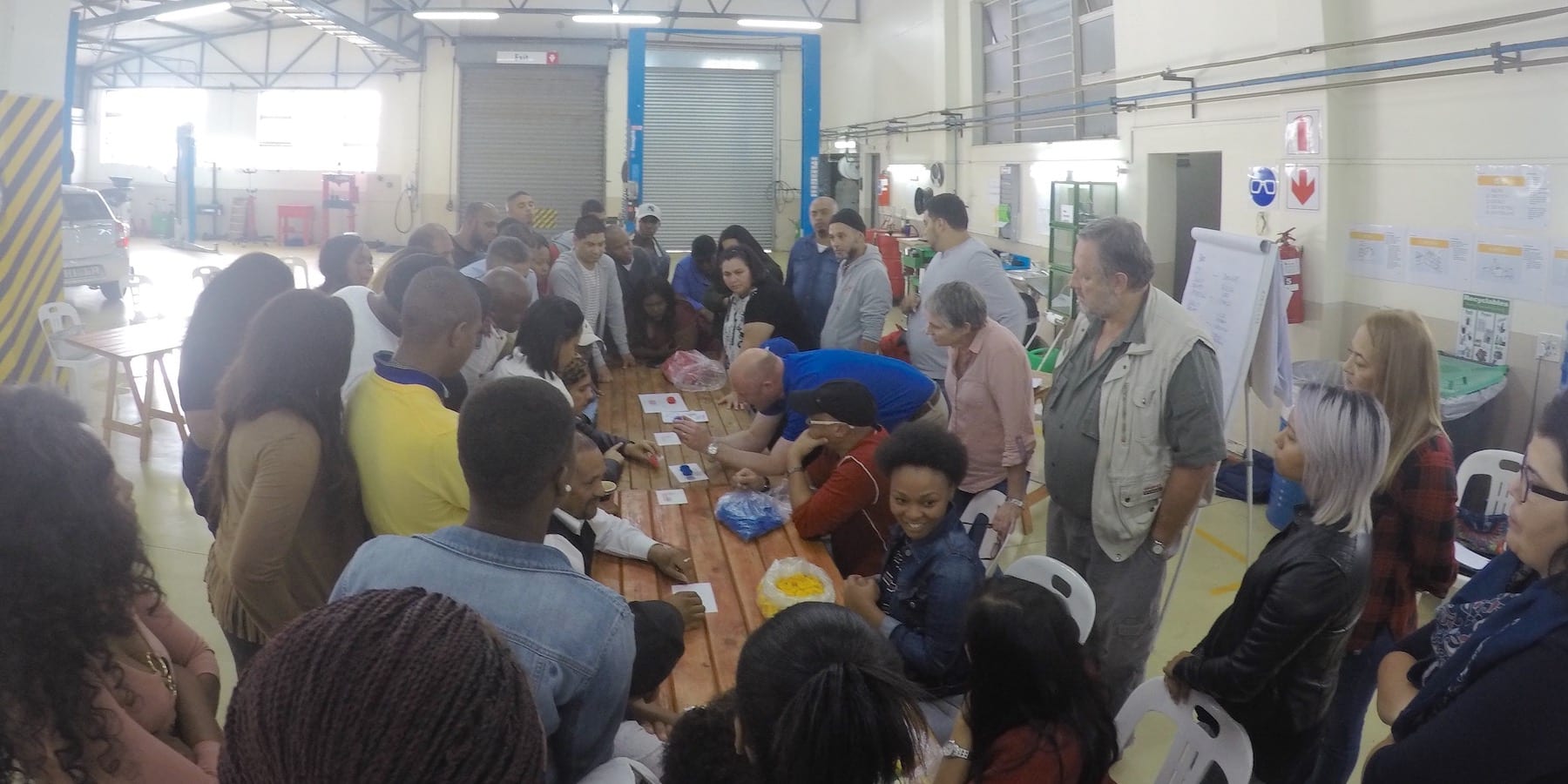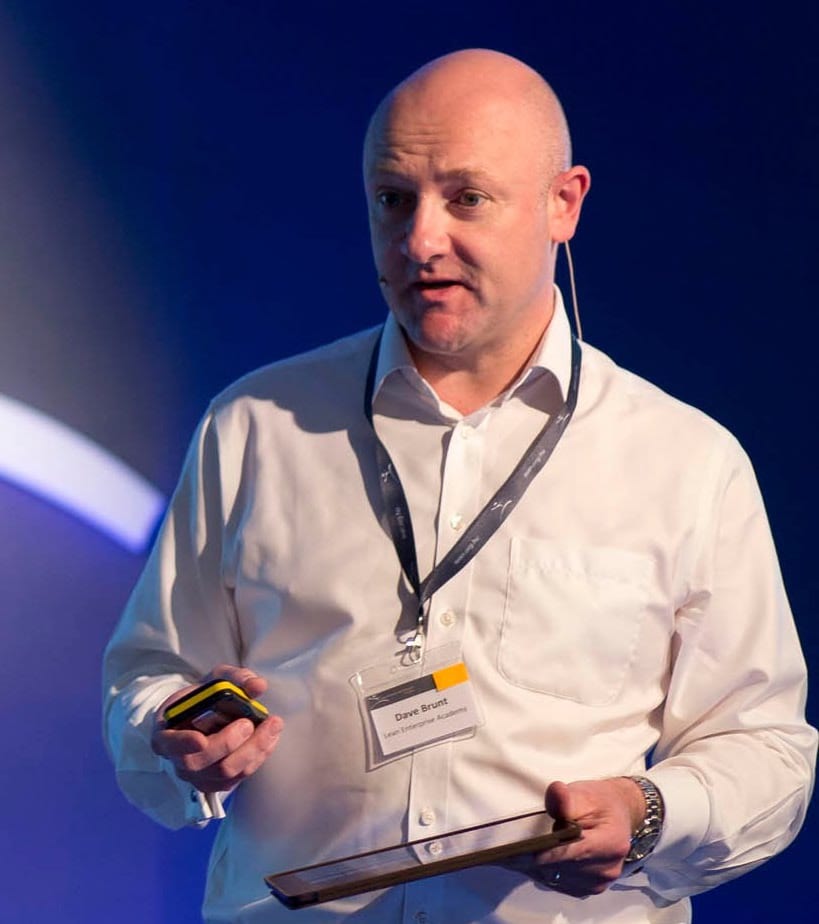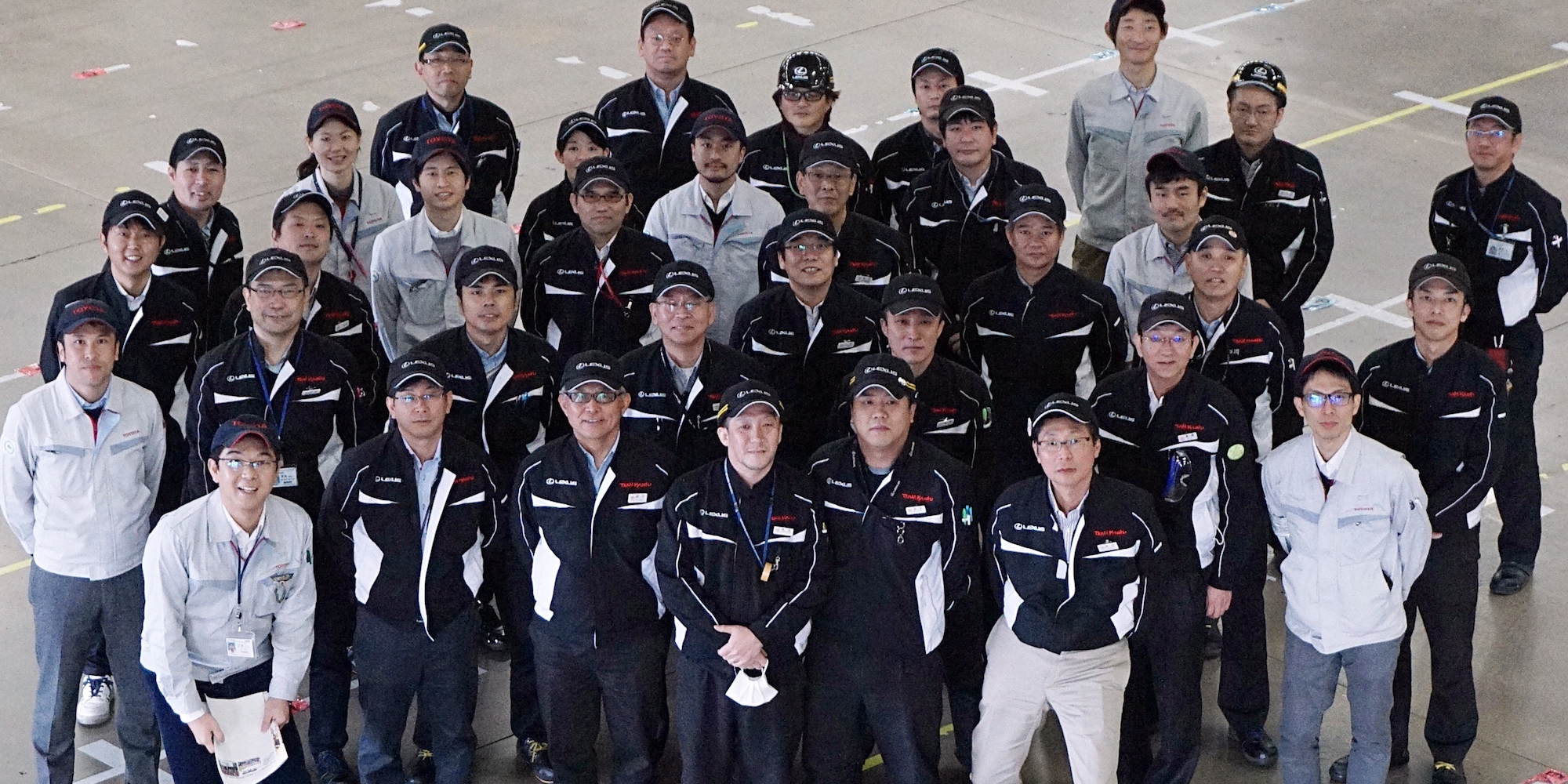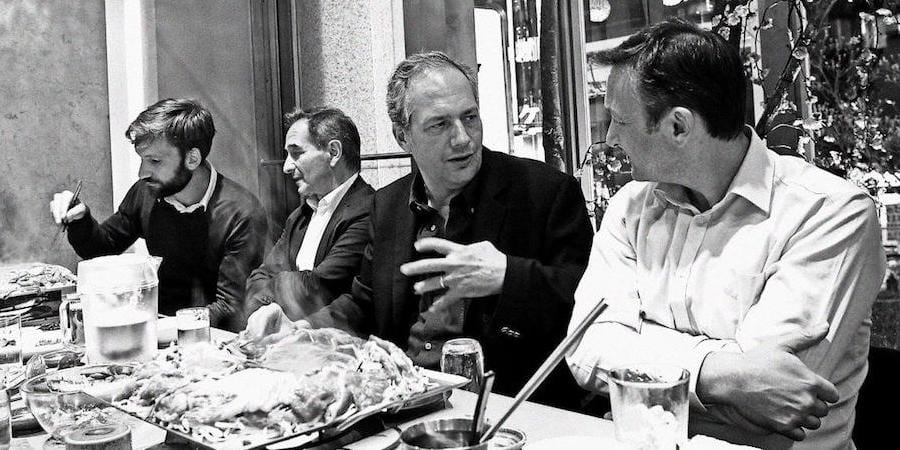
Changing our dealership to changes lives in the township
FEATURE – The principal of the Halfway Ottery dealership explains how their lean culture based on respect and improvement is not only changing the business, but transforming the lives of people in the townships.
Words: James Wood, Dealer Principal, Halfway Ottery – Cape Town, South Africa
In 2011, I was going to retire from the corporation I had been with since 1988. For the last 14 years, I had been a Dealer Principal with this group at a Toyota dealership in Cape Town. In what must have been fate, I saw a vaguely familiar man looking at me in the airport lounge one day. He came over and introduced himself. It was George Baikie, who owned a number of Toyota dealers in Kwazulu-Natal. It was a chance meeting and we exchanged cards.
What I did not know was that George was in Cape Town because he was interested in buying the Toyota dealership in Ottery, one of the smallest in the Toyota network in South Africa and not healthy as a business. I thought little about the meeting until a few months later when George phoned me to say he had bought the Ottery dealership and thought I would be the right man to run it. The time was right for me. Corporate policy meant I had to retire at my age, but I felt I could go on for many more years. George and I met and quickly reached a deal.
I walked into Ottery on February 1, 2011, as Dealer Principal.
It did not take long for me to realize that I had come to a very different place from what I was used to. It just happened that the staff had organized their own annual function for the next day. They invited George and I to join them at this dinner party. As we went from table to table to sit with and meet as many people as possible, we listened to them describe what their time at Ottery had been like. It was not like anything I had ever heard before. It became clear why the business was in such a state that Toyota had started the process of cancelling the franchise agreement. What I heard that night made me realize just how much would have to change.
When I joined Halfway, one of the first events I attended with George was a session with the Dealer Principals of all his branches and the other senior staff on developing and aligning around the vision for the Halfway Group. For a weekend we considered where we were, what we were facing, what we needed to do and how to go about it. The facilitator of the session, Steve Hobbs, got us to start with who we were. We told our the stories of our lives so far. In that group of strangers, most of whom I had just met for the first time, I saw the power of giving each person the space to find their voice and tell their story. We listened to people talk to each other with an honesty and openness that I had never encountered in a business setting. I opened up myself, in a way I had never done before, sharing very personal details and tales, and so did everyone else. I felt we then understood each other because we were so aware of each other and the people we were. The way we were then able to align our thinking and share our plans after that gathering made me certain I wanted to bring this process to Ottery.
We started in October and included everyone that worked in the dealership. It needed me to start first and be totally open with people with my story. Everyone thinks that just because you are the boss you have never had a bad time in your life. When they learned that I did, they opened up and told their stories… and what stories they were!
One of the consequences of our history in South Africa is that we tend to live separate lives and that we lack a shared understanding of our experiences. Traditional management left us in ignorance. In Ottery, we were in a multi-cultural, multi-racial, multi-ethnic environment and we had to start the journey by trying to understand each other. By starting with our own stories and giving each person the space to give voice and talk about their lives, we started to build that understanding.
From the better understanding and openness with one another, we gradually build trust. It doesn’t happen instantly; instead, we built it bit by bit, by continually living values of respect and inclusiveness, and that led us to a common understanding and, eventually, alignment.
CHANGING LIVES
The Cape Flats is an area to the south-east of Cape Town. It’s a ghetto, poverty stricken, riddled with crime and dominated by gangs. For the staff at Ottery this was a daily reality. For young men it is difficult to resist the pressure to join a gang (it is often a matter of survival). It was no different for many of my staff. The inter-gang rivalry is played out in the streets and often with firearms. Little children learn, from a very early age, to drop to the floor and take cover at the sound of gunshots outside.
As a business, our market is centered on the Cape Flats. The population is mostly poor and almost exclusively black or coloured. We consciously employ people from this area because we believe they are the best placed to relate to locals, understand them and their issues, speak their language, and build a rapport with them. We can teach people the technical aspects of selling cars, but the connection with and understanding of a community like this will better come from a shared life experience. That shared experience and language is the foundation of the trust that is needed between the customer and sales executive most especially when the customer is a first-time car buyer and often the first in his family to own a car. When the time came to expand our operation by opening small branches, first in Mitchell’s Plain and then Khayelitsha (the fastest growing township in South Africa), it gave us a great sense of pride that we were able to staff those branches exclusively with staff who live in those areas.
Our people are very important to us. The approach we have to hiring and training them is unlike any I have seen anywhere else in my career. The staff are very involved in the recruitment and are often the first to bring forward candidates from their communities. We have senior people who started in this business as assistants and are now branch managers, or as drivers or in the wash-bay, and they are now qualified technicians and fitters.
This business is changing lives here in Ottery. The opportunity to be employed and earn money is only available to a minority of the population around here: a lot of Halfway Ottery employees have been able to move their children to better schools or buy a house, thus turning the vicious cycle of poverty into a virtuous one of development. All many people in this country need is a chance, and given one they will gradually come through.
Lean thinking emphasises the importance of finding better ways to serve the customer. To me the focus is first on the staff. If they are looked after, treated well, trained well and supported, then they will look after the customers and the business. The alignment journey we embarked on and the lean transformation have dove-tailed seamlessly in our business. People have the opportunity to be heard and to participate. We value involvement and co-creation, which is why we can impement change so fast (it is not unheard of to find our people already starting to make the changes and take action before we have even ended the meeting that discussed the topic). I remember looking through my window into the workshop to see people armed with black and yellow paint, measuring up the lines to paint the pillars that had been described as difficult to see from the mini-bus driver’s seat. (We sell a great many mini-busses at Ottery and this was identified as a safety issue.) The problem was already being tackled before I had concluded the meeting where it was raised.
Indeed, the response to problems is very fast here. To me it shows there is alignment. That people take responsibility, understand the benefits and where we want to go as a business, and want to participate in the change and improvements. My role is not to tell them what to do, but to encourage them to respond to the problems that they have identified and to come up with decisions and countermeasures to try. The truth is that lean gives a person a journey to travel on, whatever their job might be, as well as the right to think, talk, and change things that aren’t working. Part of my role is to protect that right and encourage them to use it.
At Halfway Ottery, everybody is involved and makes suggestions for improving processes: because they understand that solving a problem is beneficial to them too, people show a great degree of involvement in our improvement efforts. By watching the work, you can see the waste and the problems, and anyone can observe the work in order to understand it. By watching the preparation of our sales files, for example, we found that one worker was having to walk what amounted to a staggering three weeks per year just to reach the printer. So, it wasn’t a difficult decision to place a printer next to her desk.
Involvement brings good suggestions, which in turn bring direct results, which leads to greater involvement, and so on. The refreshing thing about our lean journey is that it couldn’t be further away from a corporate change program. Top management delegating the improvement to a lean team doesn’t work. Improvement is part of my job, as it is part of each and everyone’s job at Ottery.
Our approach is entirely based on the idea of looking at the gap, thinking through the process and trying to close that gap. It is not a matter of using a lean tool or training an expert who will change things for us. We do get guidance and help from outside, but these are focused on helping us with our approach to solving problems rather than on solving the problem itself.
Every single person here was given an opportunity to think differently, and boy, how far they have come. I have never worked with people like these – dedicated, passionate, hard-working. I’d go to war with them. Through my journey, I have learned that anybody can do anything, given the chance. It is my role as leader to show them the way. And if they don’t succeed, they still have my backing – because if you don’t try, you’ll just never know.
REFLECTIONS FROM THE COACH

It’s obvious that leadership is key to the successful implementation of lean. However, defining the way leadership should support this is complex. There isn’t “one best way” or a simple recipe, and we can all agree that assessments and certificates are rarely a path to sustainability! Each transformation is unique, which means a situational approach is required. It helps if the leader can cut through the noise and tackle complex issues by communicating a common purpose.
Of course, a good leader needs a process that enables him or her to understand where they are and where each person on their team is, where they all want to be, and where they need to be on a whole host of dimensions.
Questions are a good way to uncover gaps. You can learn a lot on whether lean will last from the subsequent discussions. You rarely learn much from the tools that are being applied at a given moment in time. What is the reason why you want to do this? What is the purpose of the organization? What problem(s) do you want to solve? What will you need to change? How do you currently solve problems? How do you currently develop capability? How do you currently spend your time? How do you want to spend your time? What behaviors are important? How will you know when you are heading in the right direction?
Good lean leaders place emphasis on good thinking and experiments that lead to the development of their people to solve problems that are in line with the business’ purpose.
Dave Brunt, CEO, Lean Enterprise Academy
Have you watched our documentary on their lean transformation yet?
THE AUTHOR

Read more


FEATURE – An obeya room can be the cornerstone of a lean transformation, but developing a successful visual management environment is easier said than done. Nike’s Technology department shares a few tips.


INTERVIEW – A team from LGN just spent a week on the gemba with Toyota veteran Hideshi Yokoi for a jishuken exercise. We asked him to explain to us how he used this practice while at Toyota Motor Kyushu.


NEWS - By offering tours of best-in-class companies and bespoke training to MBA students from Moscow State University's Business School, LGN's Turkish affiliate is helping to spread lean thinking in Russia.


FEATURE – Following a visit to a Toyota supplier in Japan, the authors reflect on the nature of kaizen and explain why we might be looking for it in the wrong place.

